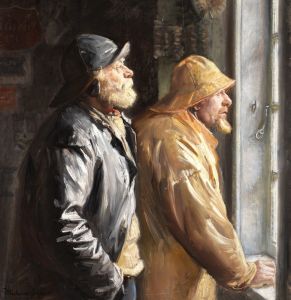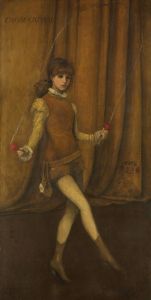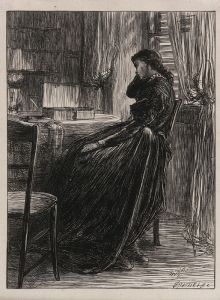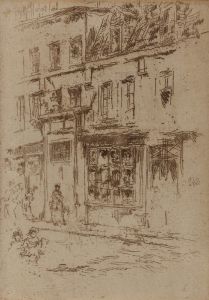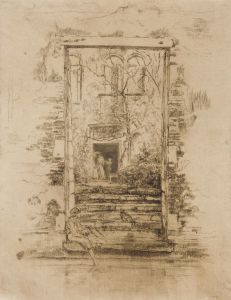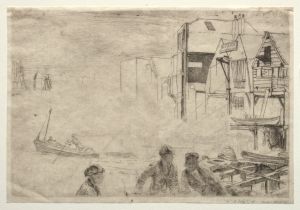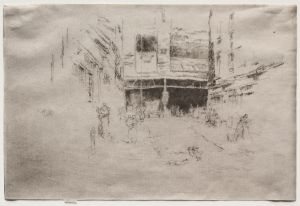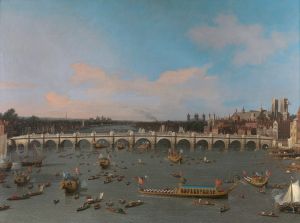
The Little Mast
A hand-painted replica of James Abbott McNeill Whistler’s masterpiece The Little Mast, meticulously crafted by professional artists to capture the true essence of the original. Each piece is created with museum-quality canvas and rare mineral pigments, carefully painted by experienced artists with delicate brushstrokes and rich, layered colors to perfectly recreate the texture of the original artwork. Unlike machine-printed reproductions, this hand-painted version brings the painting to life, infused with the artist’s emotions and skill in every stroke. Whether for personal collection or home decoration, it instantly elevates the artistic atmosphere of any space.
James Abbott McNeill Whistler was an American artist known for his significant contributions to the art world during the late 19th century. He was a leading figure in the Aesthetic Movement, which emphasized the visual and sensual qualities of art and design over practical, moral, or narrative considerations. Whistler's work is characterized by its innovative use of color and composition, as well as his belief in "art for art's sake."
"The Little Mast" is one of Whistler's lesser-known works, and there is limited information available about this specific painting. Whistler's oeuvre includes a wide range of paintings, etchings, and lithographs, often focusing on landscapes, portraits, and nocturnes. His most famous work, "Arrangement in Grey and Black No. 1," commonly known as "Whistler's Mother," exemplifies his style and approach to composition and tonality.
Whistler was born in Lowell, Massachusetts, in 1834, and spent much of his early life in Russia and England. He studied art in Paris, where he was influenced by the Realist movement and artists such as Gustave Courbet. Whistler's time in Paris and later in London exposed him to various artistic styles and movements, which he synthesized into his unique approach.
Throughout his career, Whistler was known for his distinctive style, which often featured muted color palettes and a focus on harmony and balance within the composition. He frequently titled his works using musical terms, such as "symphony," "nocturne," and "arrangement," to emphasize the aesthetic and compositional qualities of his art.
Whistler's work was often met with mixed reviews during his lifetime. He was involved in several public controversies, most notably his libel suit against art critic John Ruskin in 1878. Ruskin had harshly criticized Whistler's painting "Nocturne in Black and Gold: The Falling Rocket," leading Whistler to sue for defamation. The trial brought significant attention to Whistler and his work, although he was awarded only a nominal sum in damages.
Despite these controversies, Whistler's influence on the art world was profound. He was a key figure in the transition from the Realist and Romantic movements to the more abstract and expressive styles that characterized the late 19th and early 20th centuries. His emphasis on the aesthetic qualities of art paved the way for future movements, such as Impressionism and Modernism.
Whistler's legacy is evident in the continued appreciation and study of his work. His innovative approach to composition, color, and form has inspired generations of artists and art enthusiasts. While "The Little Mast" may not be as widely recognized as some of his other works, it is a part of Whistler's broader body of work that continues to be celebrated for its artistic significance.
In summary, James Abbott McNeill Whistler was a pivotal figure in the art world, known for his distinctive style and contributions to the Aesthetic Movement. While specific details about "The Little Mast" are scarce, Whistler's overall impact on art history remains significant, and his works continue to be studied and admired for their aesthetic qualities and innovative approach.






